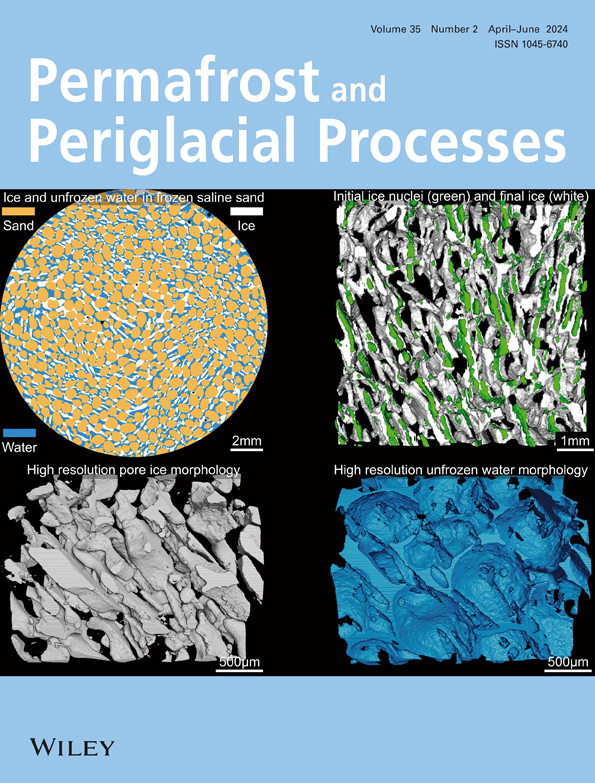Investigation, Monitoring, and Simulation of Permafrost on the Qinghai‐Tibet Plateau: A Review
IF 3
3区 地球科学
Q2 GEOGRAPHY, PHYSICAL
引用次数: 0
Abstract
The Qinghai‐Tibet Plateau (QTP) is the largest permafrost region in the world at low and middle latitudes and high elevation. Permafrost is being degraded on the QTP due to global warming, which has a significant effect on regional climate, hydrological, and ecological processes. This paper provides a summary of recent progress in methods used in permafrost research, the permafrost distribution, and basic data relevant to permafrost research on the QTP. The area of permafrost was 1.32 × 106 km2 over the QTP, which accounts for approximately 46% of the QTP. Moreover, simulation studies of the hydrothermal process and permafrost change were reviewed and evaluated the effect of permafrost degradation on hydrological and ecological processes. The results revealed that the effects of permafrost on runoff were closely related to soil temperature, and the effect of permafrost degradation on the carbon cycle requires further study. Finally, current challenges in simulation of permafrost change processes on the QTP were discussed, emphasizing that permafrost degradation under climate change is a slow and non‐linear process. This review will aid future studies examining the mechanism underlying the interaction between permafrost and climate change, and environmental protection in permafrost regions on the QTP.青藏高原冻土调查、监测与模拟:综述
青藏高原(QTP)是世界上最大的中低纬度、高海拔永久冻土区。由于全球变暖,青藏高原的冻土正在退化,对区域气候、水文和生态过程产生了重大影响。本文概述了永久冻土研究方法的最新进展、永久冻土分布以及与青藏高原永久冻土研究相关的基本数据。QTP的冻土面积为1.32×106平方公里,约占QTP面积的46%。此外,还回顾了热液过程和冻土变化的模拟研究,并评估了冻土退化对水文和生态过程的影响。结果表明,冻土对径流的影响与土壤温度密切相关,而冻土退化对碳循环的影响则需要进一步研究。最后,讨论了目前在模拟 QTP 永久冻土变化过程方面所面临的挑战,强调气候变化下的永久冻土退化是一个缓慢而非线性的过程。这篇综述将有助于今后研究冻土与气候变化之间的相互作用机制,以及青藏高原冻土区的环境保护。
本文章由计算机程序翻译,如有差异,请以英文原文为准。
求助全文
约1分钟内获得全文
求助全文
来源期刊
CiteScore
9.70
自引率
8.00%
发文量
43
审稿时长
>12 weeks
期刊介绍:
Permafrost and Periglacial Processes is an international journal dedicated to the rapid publication of scientific and technical papers concerned with earth surface cryogenic processes, landforms and sediments present in a variety of (Sub) Arctic, Antarctic and High Mountain environments. It provides an efficient vehicle of communication amongst those with an interest in the cold, non-glacial geosciences. The focus is on (1) original research based on geomorphological, hydrological, sedimentological, geotechnical and engineering aspects of these areas and (2) original research carried out upon relict features where the objective has been to reconstruct the nature of the processes and/or palaeoenvironments which gave rise to these features, as opposed to purely stratigraphical considerations. The journal also publishes short communications, reviews, discussions and book reviews. The high scientific standard, interdisciplinary character and worldwide representation of PPP are maintained by regional editorial support and a rigorous refereeing system.
文献相关原料
| 公司名称 | 产品信息 | 采购帮参考价格 |
|---|

 求助内容:
求助内容: 应助结果提醒方式:
应助结果提醒方式:


